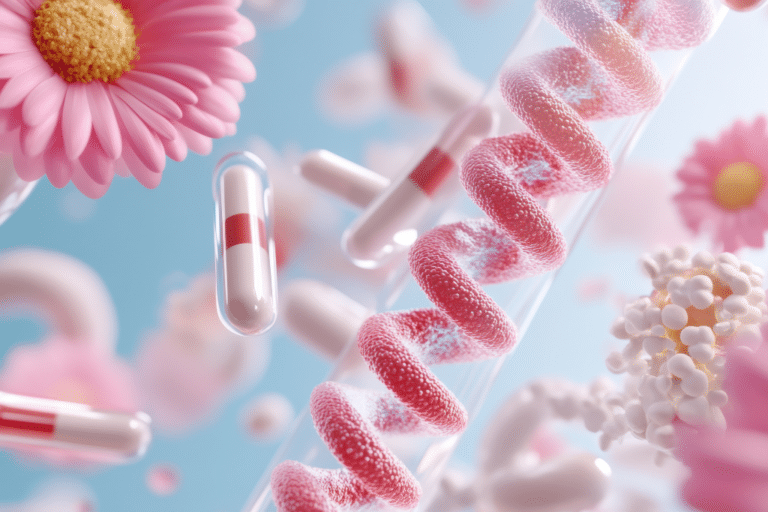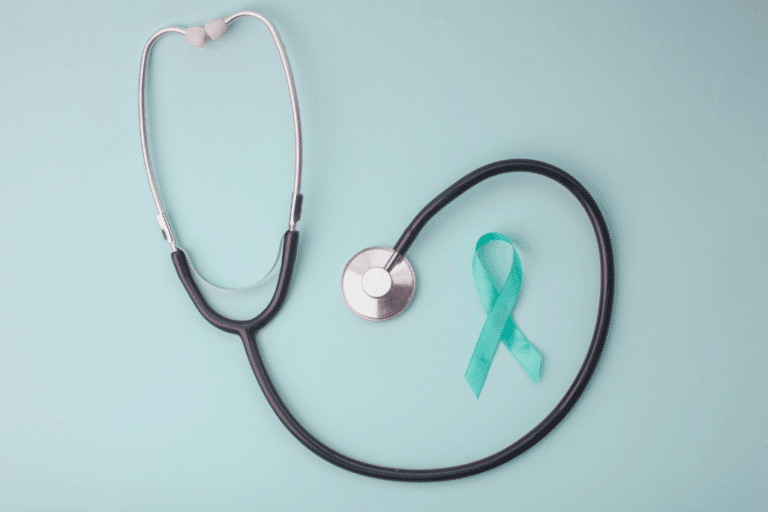When midlife women think of “hormones,” estrogen and progesterone usually get all the attention. But there’s a powerful duo quietly working in the background that also deserves our attention, especially if you’re starting to feel flat, foggy, and unmotivated or you’re losing muscle and wondering why your libido has left the building!
I’m talking about testosterone and DHEA.
These two androgens are commonly thought of as “male hormones,” but they’re essential for women, too. They play a central role in muscle tone, energy, libido, brain function, motivation, and metabolic health—aka, your healthspan toolkit. And as we get older, these hormones decline, often silently… until your body starts asking you to pay attention with the symptoms you experience.
So let’s break down what testosterone and DHEA actually do, why they matter for women in their 40s and beyond, what the latest science says about safe supplementation, and why I’m not a fan of testosterone pellets.
Why Testosterone and DHEA Matter for Women
Women produce both testosterone and DHEA in the ovaries and adrenal glands. While we don’t need as much as men, the small amount we do need is hugely impactful.
Here’s what happens when those levels dip:
🧠 Brain fog and poor memory
💪 Muscle loss and metabolic slowdown
🔥 Low libido and sexual dissatisfaction
🦴 Bone loss
💫 Confidence and drive flatlining
A 2025 meta-analysis showed that supplementing with ≥50 mg/day of DHEA (do not start with this dose) significantly increased testosterone and estradiol levels in postmenopausal women, particularly those over 60. Improvements were noted in mood, energy, and sexual health.
Other studies have confirmed that low-dose testosterone therapy can be effective for postmenopausal women experiencing hypoactive sexual desire disorder (HSDD). Still, those of us in the functional world know anecdotally that its benefits extend beyond sexual function.
The idea that testosterone may have a protective effect against breast cancer is gaining traction, especially in the functional and integrative medicine communities. While more research is needed, emerging evidence suggests that physiologic levels of testosterone (not supraphysiologic or synthetic androgens) may help counteract estrogen-driven breast tissue proliferation.
When Do These Hormones Decline?
Unlike estrogen, which drops dramatically in perimenopause, testosterone starts its slow fade in your 30s, and DHEA begins to decline even earlier. By the time menopause rolls around, your levels could be half of what they were in your 20s.
If you’re also dealing with chronic stress (hello, adrenal fatigue), long-term birth control use, or poor sleep, those levels could be even lower.

Want relief from the symptoms of perimenopause?
You’re in the right place.
You don’t have to suffer. I can help you balance your hormones and get your mojo back!
What About Testosterone Pellets?
Let’s talk about one of the most popular yet most controversial ways testosterone is delivered to women: pellets.
These are tiny hormone-packed implants (about the size of a grain of rice) inserted under the skin, usually in the hip. They slowly release testosterone over 3–4 months.
Sounds convenient, right? One and done. No creams, no patches, no remembering to take something daily.
But here’s the rub…
Pellets often deliver too much testosterone
Most pellet protocols deliver doses that far exceed physiologic levels for women, sometimes into the male range. That might feel amazing at first: energy surges, libido returns, workouts feel easier. But then the downsides start to show up:
- Acne, oily skin
- Hair loss (especially at the temples)
- Anger, irritability, or mood swings
- Clitoral enlargement or voice deepening (yep, and it’s often irreversible)
- Increased cardiovascular and metabolic risk at supraphysiologic levels
And because pellets can’t be removed once inserted, if your dose is too high, you’re stuck riding it out.
Even worse? Many women crash hard as the pellet wears off. That can mean 2–4 weeks of fatigue, depression, and hormonal whiplash before the next insertion.
Other downsides include expense (it’s a lot) and the need for a surgical incision in your butt.
The Smarter Approach: Personalized, Physiologic Dosing
If testosterone therapy is needed, there are safer and more flexible options, including:
- Transdermal cream or gel
- Sublingual troches
- Injection
- Oral DHEA (for precursor support). I haven’t had much success with this, TBH, but I also rarely recommend high doses of DHEA.
These routes can be titrated slowly, labs can be monitored, and doses adjusted. It’s not about going from zero to superwoman—it’s about restoring balance so you feel like your best self.
And remember: testosterone isn’t the whole story. DHEA also plays a vital role, especially in women with adrenal insufficiency or high stress. One 2025 meta-analysis confirmed that 50 mg of oral DHEA can significantly raise both testosterone and estradiol in postmenopausal women without pushing levels too high.
How to Know If You’re Low
Here are common signs your testosterone or DHEA may be lagging:
- Low libido
- Brain fog
- Muscle loss
- “Blah” mood or motivation
- Poor recovery from exercise
- Vaginal dryness or discomfort
- Midsection weight gain
We don’t guess—we test. I use functional lab testing like the DUTCH Complete to measure hormone levels and how you’re metabolizing them. This gives us the data we need to tailor a safe, effective plan. It’s very easy to overdo testosterone dosing in women, so this should not be done blindly. Otherwise, you run the risk of acne, hair loss, irritability, deepening of the voice, and clitoral enlargement. The last two are particularly likely with very high levels.
The Bottom Line
You deserve to feel strong, focused, and sexually alive well into your 40s, 50s, and beyond. Testosterone and DHEA aren’t just for men—they’re key players in the health and vitality of midlife women.
But more isn’t better. And shortcuts like pellets often come with consequences.
Unfortunately, there are no FDA approved forms of testosterone for women and studies on efficacy are few and far between. Currently, testosterone is only indicated in women for hypoactive sexual desire disorder (HSDD).
However, if your energy, libido, or spark has vanished and no one’s mentioned checking your androgens—it’s time to change that. Let’s find your hormonal sweet spot and support your healthspan from the inside out.
REFERENCES
- He, S.Y., et al. (2025). Impact of DHEA supplementation on testosterone and estradiol levels in postmenopausal women: A meta-analysis. World Journal of Men’s Health. https://wjmh.org/DOIx.php?id=10.5534/wjmh.190006
- Li, Y., et al. (2020). Dose–response metaanalysis of DHEA supplementation on testosterone in women. Maturitas. https://www.sciencedirect.com/science/article/abs/pii/S0531556520304587
- Cleveland Clinic (2021). Prescribing Testosterone and DHEA: The Role of Androgens in Women. https://consultqd.clevelandclinic.org/prescribing-testosterone-and-dhea-the-role-of-androgens-in-women
- Wierman, M.E., et al. (2022). Endocrine Society Clinical Practice Guideline Update: Hormone Therapy in Women. https://en.wikipedia.org/wiki/Dehydroepiandrosterone_sulfate
- Center for Human Reproduction (2025). DHEA for Postmenopausal Sexual Health. https://centerforhumanreprod.com/reproductive-health-blog/dhea-evidence-based-support-for-postmenopausal-sexual-health
- Glaser R, Dimitrakakis C. (2013). “Reduced breast cancer incidence in women treated with testosterone.” Maturitas, 76(3), 342–349.
https://pubmed.ncbi.nlm.nih.gov/23953691/
Dr. Anna Garrett is a menopause expert and Doctor of Pharmacy. She helps women who are struggling with symptoms of perimenopause and menopause find natural hormone balancing solutions so they can rock their mojo through midlife and beyond. Dr. Anna is the author of Perimenopause: The Savvy Sister’s Guide to Hormone Harmony. Order your copy at www.perimenopausebook.com.
Dr. Anna is available for 1-1 consultation. Find out more at www.drannagarrett.com/lets-talk




